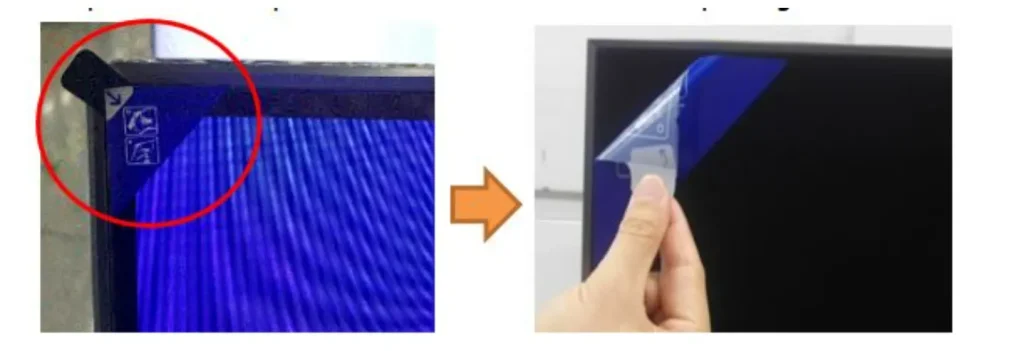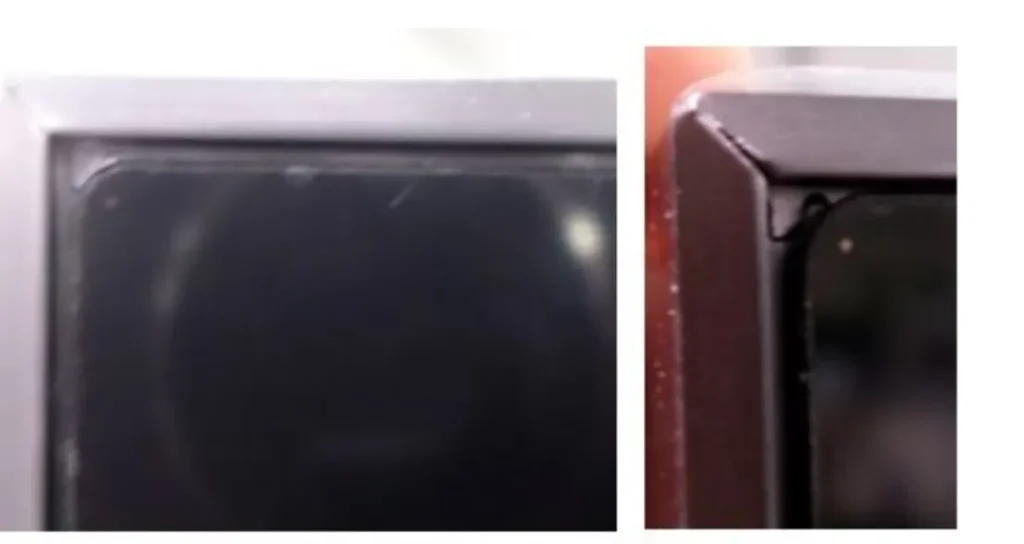It may seem trivial, but it’s not uncommon for people to mistakenly remove the polarizing film or even the entire OLED screen instead of just the protective film. In many cases, people unknowingly leave the protective film on their TV screens for months, only noticing something is wrong when the film starts bubbling.
Polarizing vs. Protective Films on Screens
Protective Films: Some TVs come with protective films, while others do not. This depends on the display technology used. Specific displays are designed in a way that they don’t require a protective film, whereas others, especially those with more fragile screens, are equipped with one. For high-end displays costing thousands of dollars, a protective film is used to shield the screen because the film is inexpensive compared to the screen itself. These films are applied at the factory after the TV assembly and must be removed after installation.
Polarizing Films: Some TVs, on the other hand, feature special polarizing films, often to provide anti-reflective properties. These films should not be removed, as doing so can damage the display or cause it to lose certain functions.
The challenge is to determine whether your TV has a film at all and whether it should be removed or left in place.
Protective films on the TV screen, how to detect and remove them
TV manufacturers usually label protective films so that users know to remove them. Usually, a bright blue or red sticker is in the corner of the film, with an arrow indicating where to pull it.

However, some TVs do not have such markers. In such cases, a barcode sticker is often placed directly on the film to signal its presence. Use a piece of tape if you notice a barcode sticker on the screen. Stick it to the corner of the film and pull gently to remove it.
Avoid using sharp objects or fingernails, as this can damage the screen.
If you’re wondering whether to leave the protective film on or remove it, the answer is obvious – you should remove it. Here are three reasons why:
- Deterioration over time: If you don’t remove the film in time, it can lose its properties, making it harder to peel off. Pieces may remain glued to the screen.
- Image distortion: When the screen heats up, bubbles or peeling bubbles may form under the film, distorting the image quality.
- Risk of overheating: The protective film can trap heat, which is especially problematic for OLED TVs. These screens depend on proper heat dissipation, and excessive heat can lead to rapid degradation of OLED materials, affecting their performance and durability.
Polarizing films on the TV screen

Some televisions may have polarizing films on the screen, these films do not need to be removed, they are necessary for the correct operation of the TV. It is very easy to detect the presence of such a film. Look in the upper right corner and you will find a small gray dot on the screen. This dot signals the presence of a polarization film. As a rule, such films are installed on displays made by rather outdated technologies.





